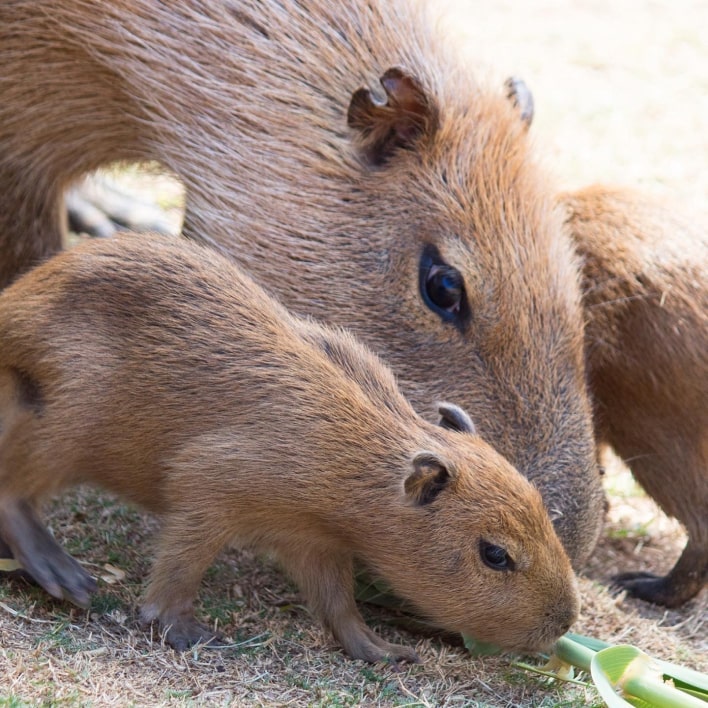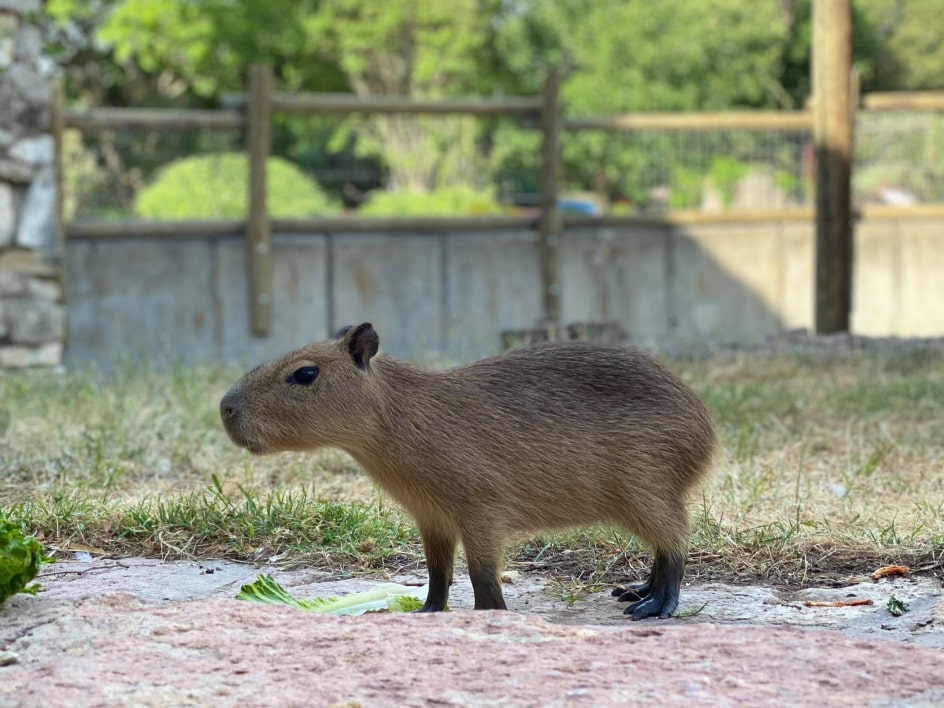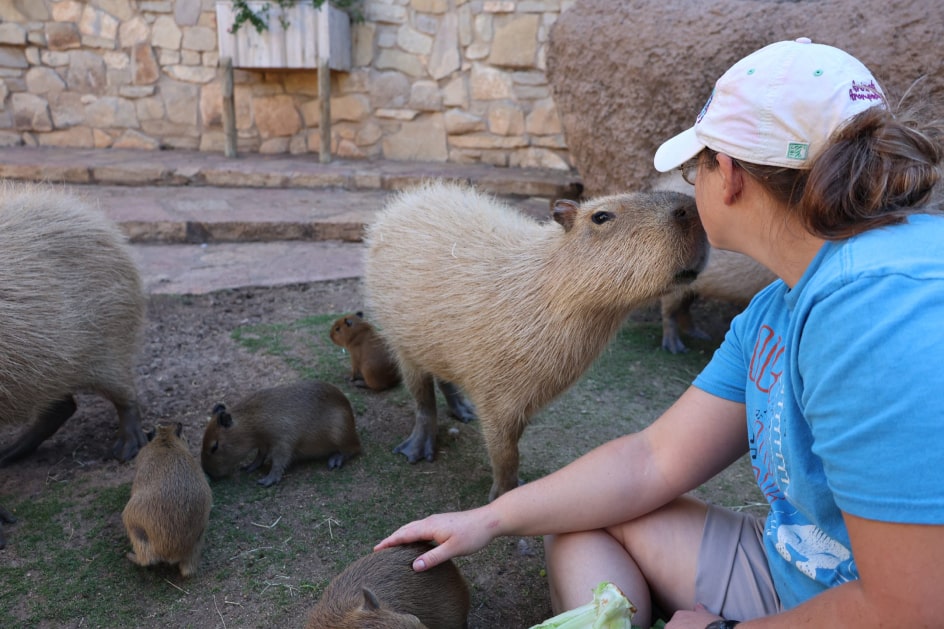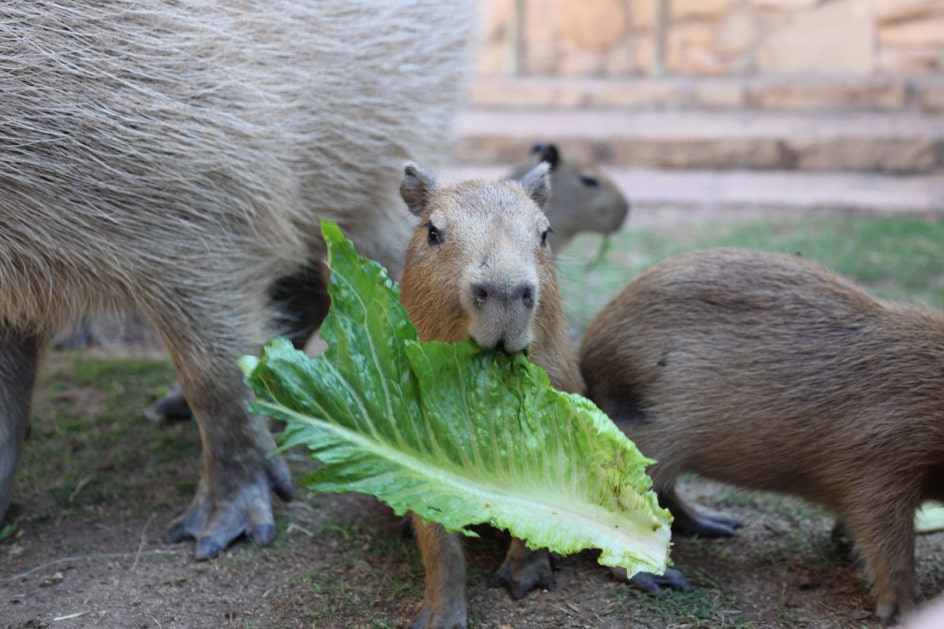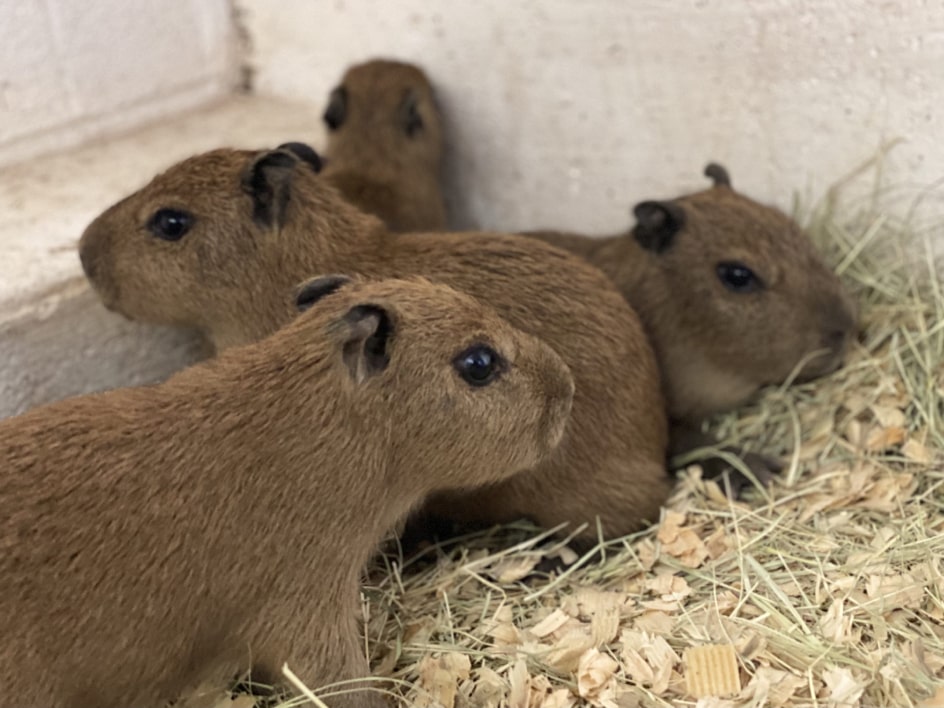Today, we embark on a journey to the wonderful world of the Capybara, the largest rodent on the planet. Voluptuous yet so gentle, Capybaras are a favorite among Abilene Zoo visitors. Let’s explore more about what makes these mammals remarkable.
Diet
Capybaras are herbivores that rely heavily on grasses and aquatic plants for nourishment. In the wild, they enjoy a variety of woodland bounty of fruits, bark, and tree roots. Their digestive system is adapted to process large amounts of plant material, allowing them to extract the necessary nutrients efficiently.
Habitat
Capybaras are South American natives commonly found near aquatic ecosystems such as rivers, lakes, and swamps. These mammals are well-adapted to their environments as they have webbed feet that make them excellent swimmers. Even so, they do not mind an adventure on land as they can cover a distance of up to 35 kilometers per hour.
Size and Weight
Capybaras are massive rodents. Adults typically weigh between 77 to 146 pounds and measure around 20 to 25 inches tall at the shoulder. Males and females are similar in size, but females are often slightly heavier. Baby Capybaras are born well-developed and can walk and swim shortly after birth. The newborns have an astounding growth rate as they can reach nearly half their adult size within a few months.
Migration
Capybaras migrate seasonally and in groups in the wild, chiefly in search of foliage and water. They may also relocate over long distances to pursue alternative habitats during the dry season. Young Capybaras, however, migrate at the onset of sexual maturity and in defiant cynicism.
Conservation Status
Capybaras are widely distributed and exhibit a large population; they’re currently listed as a species of Least Concern by the IUCN. Despite that, they’re threatened by habitat destruction, illegal hunting for their meat and hide, and continued deforestation. Joint conservation efforts, including those by zoos, are critical in ensuring their continued survival.
We invite you to visit the Abilene Zoo today to feel the marvel of having a close encounter with the Capybaras as you learn more about our dedicated efforts to conserve wildlife.
Fast Facts
The capybara is the largest rodent in the world.
The scientific name for capybara comes from Hydro chaeris, which means "water hog" in Greek.
Seventy-five percent of a capybara’s diet is only three to six types of plants.
Like those of other rodents, a capybara’s front teeth are always growing.
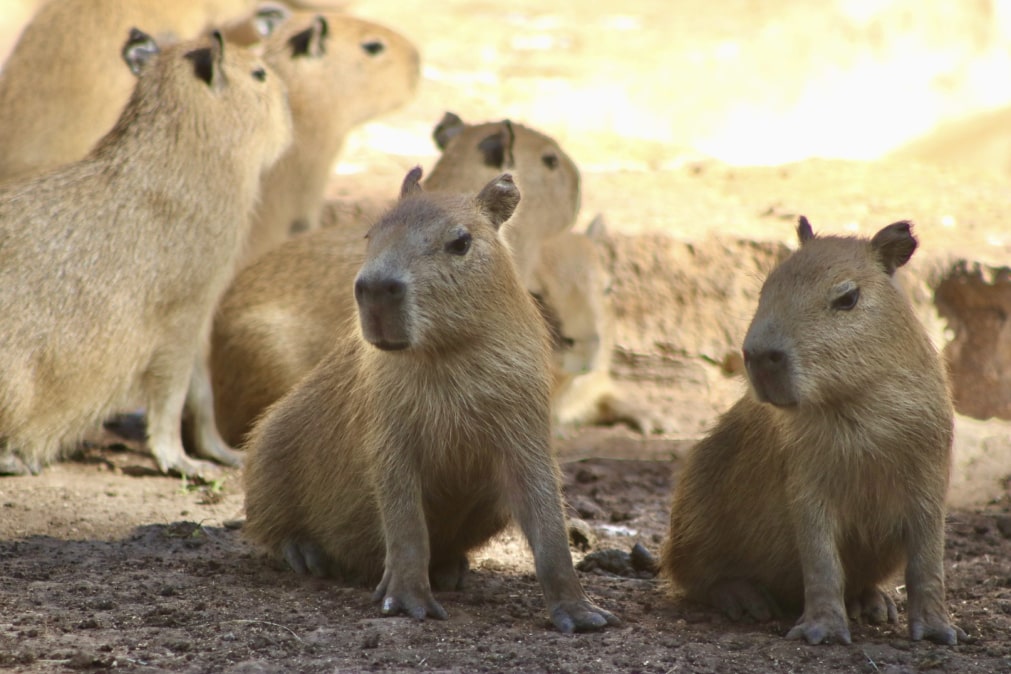
FAQ
Are capybaras friendly?
Yes. Capybaras are the friendly giants of the rodent world. Social and gentle, they are known for being calm and laid back, and form close bonds with both other capybaras and other animals. They are a favorite among zoo visitors and animal lovers alike. In the wild, they live in large groups and get along with all sorts of creatures.
What does a capybara eat?
Capybaras have a big appetite and eat a variety of foods. In the wild, they might eat fruits, tree bark, and even their poop to help digest tough plant material – a process called coprophagy. At the Abilene Zoo, our capybaras get a balanced diet to meet their nutritional needs, fresh fruits, veggies, and special rodent pellets.
Are capybaras dangerous?
Capybaras are not dangerous and are known to be gentle and friendly. They are social and get along with other animals. But like any wild animal, they can become defensive if they feel threatened or cornered.
Do capybaras bite?
While capybaras are generally sweet and easily excited about their visitors, they will bite when threatened or provoked. Any animal has the natural response of defense. Capybaras have razor-sharp front teeth that can be used as a defense weapon.
